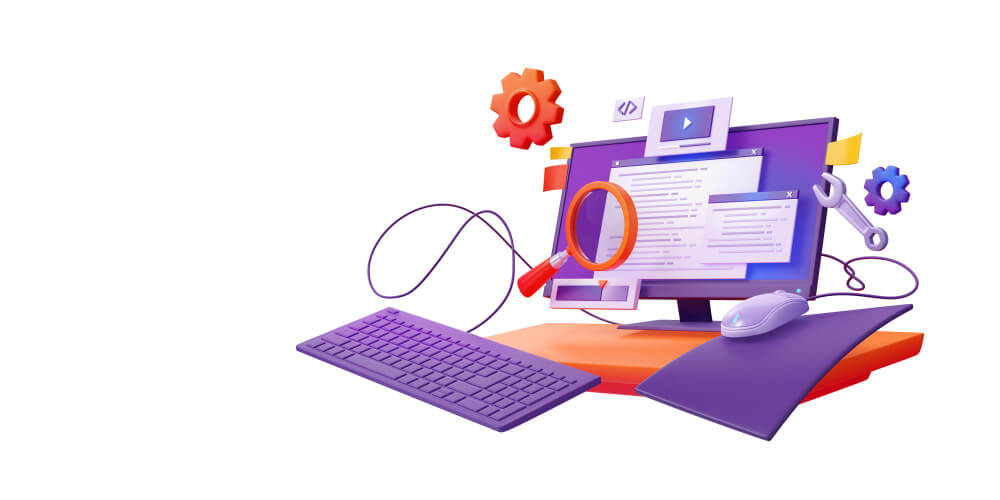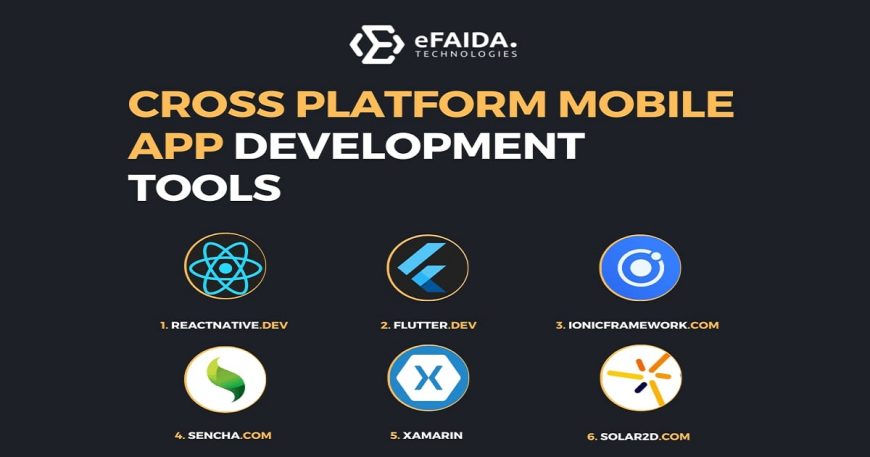Introduction
More and more cross-platform mobile app development appears nowadays, that is the way for developers to create applications based on the same code but for several platforms at the same time. The year 2024 is marked by some frameworks that are used as the most popular tools for developers trying to deliver cross-platform mobile apps within the shortest period and with less hassle. At eFAIDA, we always remain up to date with the newest trends and technologies of cross-platform app development, to deliver our client with solutions that are always at their cutting edge. Below, we examine so the most beneficial tools to be utilized in mobile cross-platform app development next year.
1. Flutter
Flutter which is a Google product has captured the minds of many developers because this software allows them to design elegant, native apps that are fast and operate on the web, mobile, and desktop from just one code base of the application. Flutter makes it possible with a rich variety of predefined widgets, a fast development, and an amazing performance which allows it to be the best option for developing cross-platform applications.
2. React Native
Developed by Facebook which won itself a name, React Native remains a preferred pick for cross-platform app development. It is a JavaScript and React framework that makes it possible for mobile app developers to draw reusable codes that give them a short development cycle. Through the use of React Native components, native APIs and features can be accessed so that the eventual apps have an appearance of native behavior.

3. Xamarin
Xamarin, now presented as a section of Microsoft’s Visual Studio, helps developers build their native iOS, Android, and Windows applications using C# as their programming language. NET. Xamarin has a wide-range collection of libraries and tools and additionally, APIs of native origin are available. Developers, thus can structure a very powerful environment for multiple platforms that will deliver a performance equal to that of the native apps.
4. Adobe PhoneGap
Adobe PhoneGap is the other name of Apache Cordova, which is an open-source framework based on HTML, CSS, and JavaScript for developing apps that run on multiple platforms. It may be noted that using PhoneGap is to build an app that is capable of performing across different platforms such as iOS and Android etc., accessing native device features through plugins.
5. Appcelerator Titanium
Appcelerator Titanium also stands out among all cross-platform frameworks for web applications built with JavaScript. It offers a codebase that makes it possible to develop apps for iOS, Android, and Windows, getting a network on native platforms and functionalities. Titanium uses the heritage of PrimeSense, the Israeli company that was the pioneer of entirely motion-detecting cameras.

6. Ionic
Catalyst which is known as an open-source framework will help you build cross-platform mobile applications which are based on technologies like HTML, CSS, and JavaScript. The Ionic library consists of reusable modules, robust CLI for the developer’s support, and seamless integration with Angular JS, which makes it a perfect tool for the crafting of mobile apps that are superb-looking and easily responsive.
Conclusion
Developing apps to run on various platforms, the cross-platform tools are persistently in the process of innovating and creating new ways offering developers the best and latest methodologies to make applications that will run on different platforms smoothly. Through the use of Flutter, React Native, Xamarin, Adobe PhoneGap, Appcelerator Titanium, and Ionic, app developers can develop fully-fledged, cross-platform mobile apps that perform efficiently and take into account the hotspots provided by the digital landscape of today.
Frequently Asked Questions (FAQs)
1. What are the benefits of using cross-platform app development tools?
Cross-platform development tools have various merits such as reduced development time and cost, more code returning, access to native features and APIs, and the ability to move devices much quicker to the target audience than before.
2. How do I choose the right cross-platform app development tool for my project?
In selecting an appropriate cross-platform app development tool, you will need to balance how your project is designed with the level of complexity, the necessary features of the app, as well as the expertise of your development team to give a native level of functionality. However, it is not only necessary to study the performance, community support, and documentation, but also the tool.
3. Can cross-platform app development tools create apps with a native look and feel?
Certainly, tools like Flutter, React Native, Xamarin, and their kind could be employed by providers who could develop apps with a native appearance. These tools, on the one hand, allow the developers to access the native APIs and features, but, on the other hand, the end applications built using these tools are not distinguishable from those developed natively.




